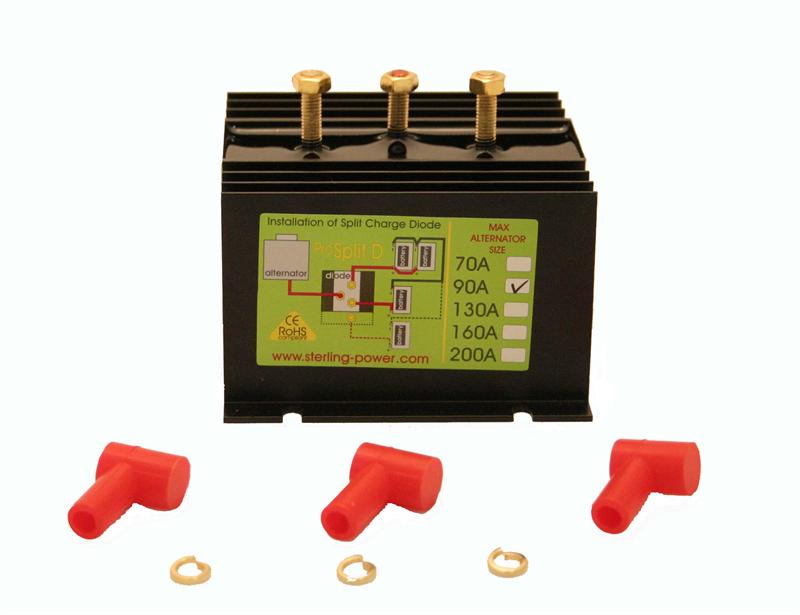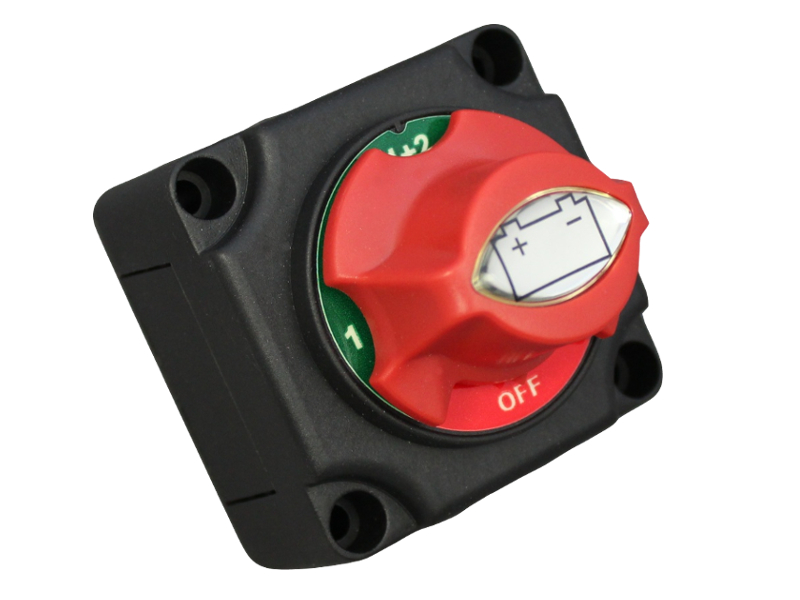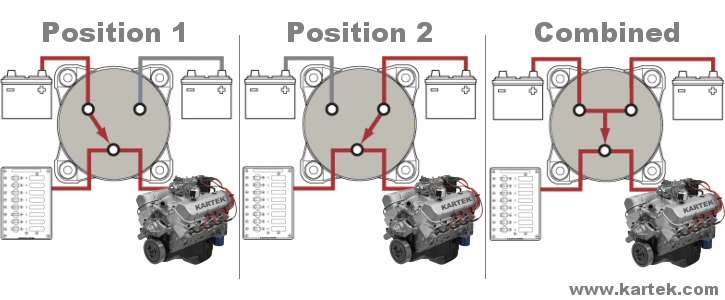

This wearing down applies to all batteries in various degrees. This loss is small while the battery is in good operating condition, but the fading increases once the performance drops to half capacity.
Blue sea marine battery isolator full#
A full discharge causes strain and each discharge/charge cycle permanently robs the battery of a small amount of capacity. Lead acid is heavy and is less durable than lithium-based systems when deep cycled. These batteries are often known as lead-antimony and lead-calcium. There are few other batteries that deliver bulk power as cheaply as lead acid and this makes the battery cost-effective for marine use. According to the techs at Battery University, “lead acid batteries are dependable and inexpensive on a cost-per-watt base. Battery Technologyįlooded Cell Lead Acid: The flooded lead acid battery has been the #1 choice for boaters for decades, although that tide is slowly turning to some of the more exotic types that we will describe later. The problem is, if the deep cycle goes out in the middle of a fishing trip, running the electronics and pumps from the starting battery for any length of time might be a potential kiss of death. You can go the one starter/one deep cell and many Fisherman readers are in this boat.

It also has extra reserve power to run accessory loads and increased amp hour ratings compared to a starting battery. As the name implies, D/P batteries usually feature higher marine cranking amps than a deep-cycle and significantly more cycling ability than a starter. They are extremely useful where you might only be able to have one battery onboard (never a great idea), or just want to have a pair of these dual-function power sources along for the ride as an insurance policy. Deep cycle batteries provide sustained energy, making them ideal for marine house battery applications that require more than a quick start.ĭual Purpose (D/P) Batteries: These hybrid switch-hitters are meant to perform both starting and deep-cycle functions.

A starter battery discharges only a tiny percentage of its potential capacity (usually 2% to 5%) each time it is used. It is important to note that although deep cycle batteries can be discharged up to 80% of their capacity, most manufacturers recommend not discharging below 50% to extend the life of the power cell. If this loose debris rises enough it may touch the bottom of the plates and cause failure of a cell, resulting in loss of battery voltage and capacity.ĭeep Cycle Batteries: These are the heavyweights in your battery choice arsenal.Īccording to the engineers at Crown batteries, a deep cycle battery is designed to provide sustained power over a long period and run reliably until it is 80% discharged or more, at which point it needs to be recharged. This allows loose disintegrated material to fall off the plates and collect at the bottom of the cell, prolonging the service life of the battery. In flooded wet cell lead acid types, starting batteries are usually lighter in weight than deep cycle batteries of the same size, because the thinner and lighter cell plates do not extend all the way to the bottom of the battery case. Starting batteries should therefore be kept open circuit, but charged at least once every two weeks to prevent sulfation and a loss of capability. Starting batteries kept on a continuous float charge will suffer corrosion of the electrodes which will also result in premature failure. Repeated deep discharges will result in capacity loss and ultimately in premature failure. They have a large number of thin plates designed for maximum surface area and maximum current output, which can easily be damaged by a deep discharge. Starting Batteries: Meant to give momentary high-power bursts to energize the starting motors on big marine outboards. Additionally, battery technology can be divided into four basic categories – flooded cell lead acid, absorbed glass mat (AGM), Gel, and Lithium/Iron. There are a trio of functional battery types, specifically, Starting, Deep-Cycle and Dual Purpose.
Blue sea marine battery isolator series#
Prices for a standard group-24 series 12V power cell can range from $100 to $1,000 or more, depending on the battery type and technology. Not all marine batteries are created equal. This month’s focus is on 12V marine battery basics, along with some of the requisite accessories that are needed to make things happen onboard. The one thing all of our fishing boats typically have in common is the reliance on some sort of 12-volt marine power cell to either start up the engine(s), run the electrical system, or both.


 0 kommentar(er)
0 kommentar(er)
